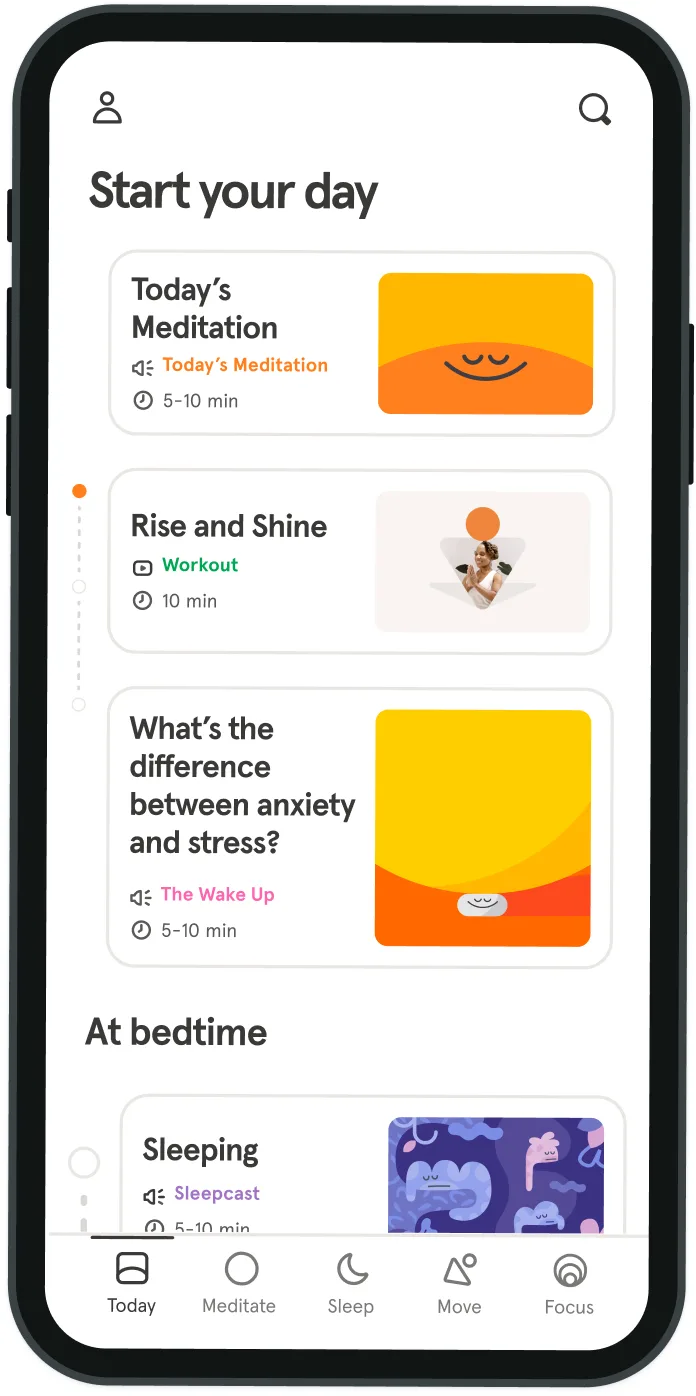Your Headspace run streak — it's not about the number
No matter how we feel about the run streak — the figure in the Headspace app that acknowledges how many days in a row we’ve meditated — that number has something important to teach us.
Of course, there’s some paradox, and considerable humor, in having to create a fixed structure to enable the mind to be free; likewise with setting goals when the intention is to live in the present, free from expectation. But as human beings, conditioned as we are, these things can be helpful. And so we come back to the run streak. If we think it is about the number itself, then we are missing the point. I’ve heard of people crying when they unintentionally miss a day and the run streak is interrupted. I’ve also heard of others being furious, even when they intentionally skip a day, and realize they are at zero when they next log on. If we experience this level of attachment to the run streak, then it might just be time to reframe our approach to it altogether. It may well be that we’ve unwittingly become competitive in our meditation, whether with oneself or others. Or it might be that we’re using it as a way to judge oneself or others. Either way, we are at risk of causing ourselves unnecessary stress. This reminds me of a message sent in by a Headspace member a little while ago. In many ways, it captures the essence of the run streak perfectly. He said he was approaching 1,500 days in a row but was worried he was becoming fixated on the number. So he purposely missed a day, resetting his run streak to zero, and then continued on his way the next day. Whilst I'm in no way recommending you drop your run streak like this, there is something interesting in being so free from the number that we are prepared to surrender it at any time. There is something interesting in understanding that we lose none of the benefits of meditation when we lose the run streak. And there is something interesting about being so at ease with it, that we are able to continue our journey in a deliberate and intentional way, even if we miss a day. The point is to sit when we can, clear in our intention and direction. Just like in the monastery, the run streak is a form of encouragement rather than judgment. The benefit of meditation does not come from a number on the screen, neither does that number on the screen have the capacity to judge us in any way. As long as we are doing our best, that’s all we need to know. We all miss days, and that’s okay. In fact, some people don’t even want to meditate on a daily basis, and that’s okay, too. The important thing is to realize when we have missed a planned session and then continue with the next, a little like noticing when the mind has wandered off before returning to the breath. Simply put: if you find the run streak helpful and motivating, embrace it. If you find it off-putting and scary, don’t pay it any attention. Most important of all, whichever way you lean, notice the way you relate to it, recognizing that our experience is ultimately defined by our perspective.
Some people love this feature, viewing it as a source of motivation, a record of accountability, and a badge of honor that reflects their commitment in building a meditation practice. Others can’t stand it, viewing it as a source of anxiety, a reminder of days missed, and an unspoken judgment of their dedication, passion, or priorities. Given that both opinions exist, we can’t say the run streak is objectively good or bad. Rather, our approach to it, and our relationship with it, is what ultimately defines our experience. Most people assume we created the run streak as a way of gamifying meditation. But its origins have less to do with Silicon Valley and more to do with the Tibetan Himalayas. The romantic version of meditative training is often portrayed as one in which time is forgotten, routines are abandoned, and goals are immediately relinquished. Having trained as a monk, I can tell you firsthand that this is anything but the case. The reality of that lifestyle is a commitment for a certain number of years, and a daily routine set by the clock. We even had a fixed amount of time to complete meditation exercises — a number to which we had to commit. Within this context, we used the concept of run streaks all the time, but it was never about the number; it was a tool to help us deliver on our intention and direction, ensuring we wasted no time and worked towards a singular point, in a clear and steady way. The Headspace run streak is, in many ways, an extension of that same discipline, and this type of structure can be incredibly helpful, creating a framework for momentum.


Be kind to your mind
- Access the full library of 500+ meditations on everything from stress, to resilience, to compassion
- Put your mind to bed with sleep sounds, music, and wind-down exercises
- Make mindfulness a part of your daily routine with tension-releasing workouts, relaxing yoga, Focus music playlists, and more
Meditation and mindfulness for any mind, any mood, any goal
- © 2024 Headspace Inc.
- Terms & conditions
- Privacy policy
- Consumer Health Data
- Your privacy choices
- CA Privacy Notice
